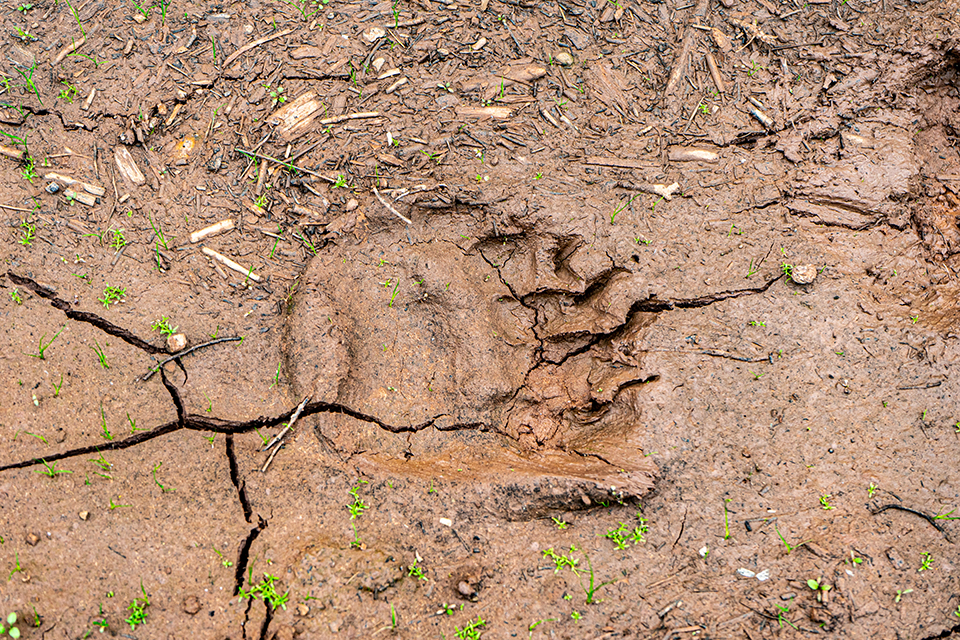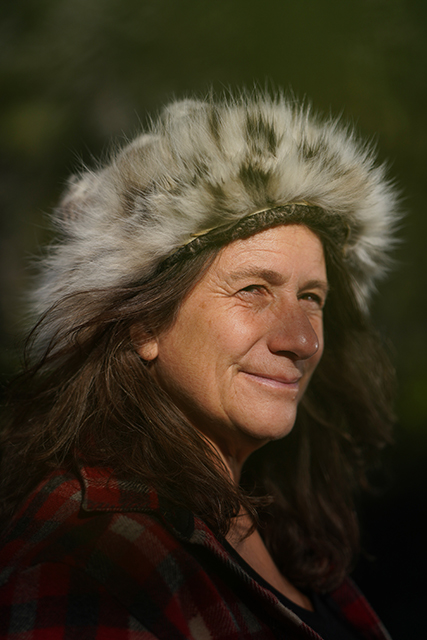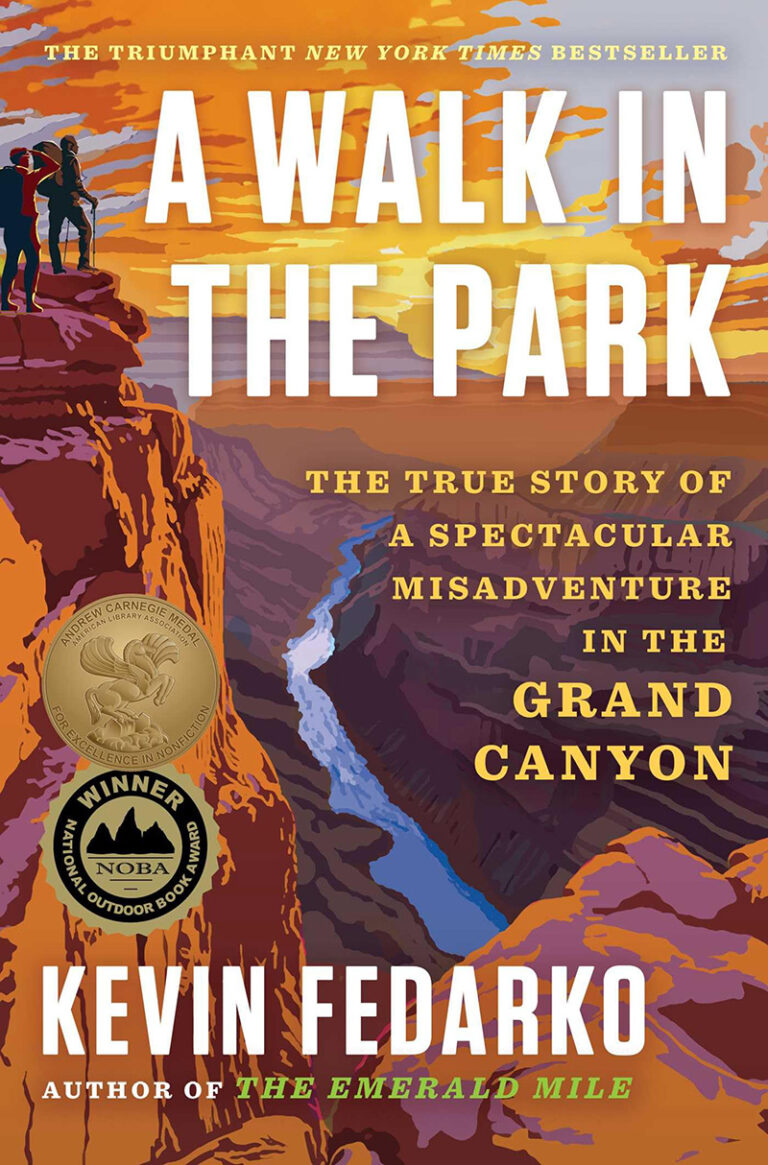By Karie Lee Knoke
Is it spring yet? It’s still snowing, so it must be winter. But, it’s also sunny, so, maybe it’s spring? Nope, IT’S MUD SEASON! Mud season is our 5th season of the year in the Inland Northwest, and typically lasts for about 6 weeks (mid-March through April). Is it time to get out and stretch the legs or time to stay in and hibernate a little bit longer? This is what the bears are thinking.
Mud creates a wonderful storyboard for tracking! On muddy trails and roads, you can see hundreds of animal tracks as they leave an imprint of their daily trekking behind (just take care not to leave too many of your own tracks and damage popular trails). An enthusiastic tracker would ask questions like: Who is it? Where are they going? Where did they come from? Why? And the list goes on. Inspecting these tracks with a keen eye can give you clues to their mysterious activities. Remember, every animal has a ‘story of the day’ to tell, just like we do.
When you think about it, everything leaves a print. The rain drop leaves a mark in the sand. The blowing wind scours a hillside. Falling bird poop stains a sidewalk. Everything that touches the ground leaves its mark, recording its history of what has happened.
But what about bears? A black bear print is easily recognizable, as it looks like a human footprint, walking on its toes (without a heel print, and, of course, with no claw marks). However, tracking a bear is not easy. Obviously, if you see a track in the mud, then you know they are out of hibernation. As a curious tracker, you may ask the questions mentioned above as you investigate. But do you follow the track to where it’s going? Only if you’re actually trying to hunt a bear or just want to get yourself in trouble. I recommend following the tracks from where they came from instead!

I find it amazing that as big and heavy as an adult bear may be (175-500 pounds), their footprints can disappear in the forest. I tend to rely on other clues, such as claw marks on a tree trunk, or a freshly torn-apart log, signs of rummaging for insects. If you ever hear a dead tree snag fall, it may be Sasquatch, but more likely a bear looking for a meal.
Then there’s your other senses. In the spring, there is a certain time when you just feel the warmth returning. The air smells differently, and in that moment, you feel “oh, spring is really here!” That’s the same for the bears; they know when spring is here and it’s time for breakfast.
In my neighborhood, the first emerging food is skunk cabbage. When I am driving around, I scope out the skunk cabbage patches. When I see the green tips emerging, I know that the bears are out.
During my time on ALONE Season 9, in the wilderness of Labrador, Canada, the black bear was the only large game that we were allowed to hunt. In past seasons, the person who got the big game was the winner of $500,000. You can imagine that all 10 of us were pursuing that bear. We were not allowed to bait the bear as normal hunters would do, and we only had our traditional bows. You must be 15-20 yards from a bear to get a good, ethical shot. (Not an easy task!) So you go where the food is and hope a bear crosses your path. For me, being a 115-lb. female, to be that close to a large animal with only a bow and the intention of killing it for food is a pretty hair-raising endeavor!

My site on ALONE had hillsides of berries. My best bet was to hang out in the berry patch, sit down, and eat (I mean pick!) the endless amounts of lingonberries while warming my depleting body in the glow of the afternoon sun. Quietly, I would wallow around from berry patch to berry patch, just like a bear would do. I kept my eyes, ears, and nostrils open for my unsuspecting black furry prey. This was the best hunting tactic I had.
Knowing where the bears are is everything in a survival situation. If you’re lucky, you may see a track, but the best sign is looking for scat. Because that’s what bears do. They eat and they poop. In fact, when the helicopter dropped me off, there was a huge pile of bear scat right next to my camera box. Thanks, guys!
As the days got shorter and temperatures dropped, the first snow storm was approaching. I went back to my berry patch. I immediately noticed that the lingonberries were gone! Not all of them, just the easy picking ones. There were tons of berries underneath the logs and bushes where large heads would have trouble getting to them. Hmm, they had already come through my territory. Fair enough!
As the snow began to fall, I picked my last handful of berries with frozen fingers and walked back to my shelter in the dark, knowing that these berries had to sustain me for a long time. My metabolism had slowed way down to endure the long winter, just like the bear. We really aren’t that different out in the wild.
My advice? Be bear aware when you’re out in the woods. Use all of your senses to tune into nature’s mysteries. Tracking is insightful and fun and can tell you a lot of stories about what happened. Using your awareness skills, you can tell what is happening right now, which could save your life!
To learn more about bear behavior, tracking skills, and other wilderness living skills, I invite you to come to one of my classes at Sacred Cedars Wilderness School in North Idaho. I hope to see you soon!
Karie Lee Knoke is a wilderness/primitive skills instructor in Sandpoint, Idaho, and the founder of Sacred Cedars Wilderness School. She was a contestant on the reality survival TV show, Alone Season 9, on the History Channel. Learn more about her story at www.karieleeknoke.com, or follow her on Facebook @SacredCedarsWildernessSchool or Instagram @karie_lee_.













